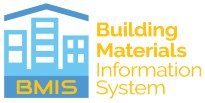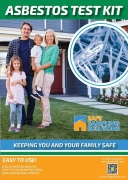What is an Asbestos Management Plan?

The New Zealand Health and Safety at Work (Asbestos) Regulations 2016 identify that an asbestos management plan shall be developed and used to manage all asbestos materials within a workplace, this includes asbestos building products, asbestos in soil and naturally occurring asbestos.
Asbestos Management FAQ
Yes. All management plans of buildings within New Zealand have to be completed by 1 April 2018.
Failure to prepare an asbestos management plan or keep the plan up to date can result in a fine of $50,000 for a company and $10,000 for an individual.
Your first action is to identify whether asbestos materials within your building are likely to release asbestos fibres.
Failure to do this can result in a fine of $50,000 to your company and $10,000 to individuals.
Identifying asbestos in the workplace does not have to be undertaken by a professional consultancy, you can undertake this yourself by using the asbestos survey good practice guidelines developed by Worksafe.
The BMIS team do not undertake surveys, however if you require an asbestos survey we recommend that you call ENGEO Ltd on 03 328 9012. ENGEO Ltd has several offices in New Zealand who specialise in environmental testing and can undertake a range of surveys to meet your needs.
Alternatively, if you are intending to complete the asbestos survey yourself, BMIS recommends using Safe Sampling Solutions. Safe Sampling Solutions provide sampling kits for asbestos testing and the correct personal protection equipment required for undertaking the sampling.
As a workplace business or Person Conducting a Business or Undertaking (PCBU), you are responsible for developing the management plan.
The approved code of practice for the management and removal of asbestos has been developed by WorkSafe to help provide support for companies and businesses to ensure that they are meeting their regulatory requirements.
An asbestos management plan must include information about:
- The identification of asbestos and asbestos containing materials (ACM) (e.g. where any signs and labels are located).
- Decisions, and reasons for the decisions, about how the asbestos risks are managed (e.g. safe work procedures and control measures).
- Procedures for recording incidents or emergencies involving asbestos in the workplace
-
Information about the workers carrying out work involving asbestos, including:
- Information and training that has been or will be provided.
- Their roles and responsibilities.
- Any health monitoring that has been or will be conducted.
Additional information that may be required is:
- A timetable for managing asbestos exposure risks (e.g. priorities and dates for removal, reviews, circumstances and activities that could affect the timing of action).
- Procedures, including a timetable for reviewing and (if necessary) revising the asbestos management plan and asbestos documentation
- Air monitoring procedures, if required.
In an undisturbed state and in a good condition asbestos products are highly unlikely to release airborne asbestos fibres. In this situation, the risk to human health is low to very low. Therefore, it is usually safer to leave the asbestos product in-situ and review its condition over time.
An algorithm developed in by the British Occupation Hygiene Society creates a series of questions for each asbestos item to help you identify the risk and therefore assigns a relevant management technique to the asbestos item.
Not at all. The process is straight forward and easy and can be incredibly cheap to manage using the Building Materials Information System. Once your survey is complete all you have to do is enter the relevant information into BMIS and let the program take care of the rest.
Want something even easier? The team at BMIS can complete this for you, just call up and ask one of the team members.
Technically no, this will depend on what ability each PCBU has to influence and control the asbestos risks. The more influence and control a PCBU has over an asbestos risk, the more responsibility it is likely to have.
As workplace PCBU, you are likely to have more control and influence of risk to your workers than the landlord therefore you would have more responsibility to protect your workers. However, PCBUs should discuss their roles and influences in each situation to come to a resolution for asbestos management.
Every PCBU involved must, so far as is reasonably practicable, work together to determine what each party is responsible for and monitor the arrangement to ensure it remains effective over time. This extends for all aspects of the asbestos regulations including identifying the asbestos management and any asbestos removal.
The workplace PCBU must make sure a copy of the asbestos management plan is readily accessible, and a copy should be kept at the workplace at all times.
Asbestos management plan must be available to:
- Workers who have worked, are working, or plan to work at the workplace, and their representatives.
- Any PCBU who has worked, is working, or plans to work at the workplace.
- Any PCBU who required, requires or intends to require work to be carried out at the workplace.
Yes, you must review and if necessary revise the asbestos management plan every five years, or when:
- Asbestos controls are reviewed.
- Asbestos is removed, disturbed, sealed or enclosed.
- The plan is no longer adequate for managing the asbestos risks, for example: if new asbestos is identified, or if a previous inaccessible area is now accessible.
- Any of the previously noted situations affects, or may affect, the health and safety of a member of the work group being represented.
- The workplace PCBU has not adequately reviewed the asbestos management plan in relation to the situation.
No, there are around 25 regulations that apply to a workplace PCBU. BMIS has been developed to help manage as many of these as possible for an online system. To see how our system stacks up please check out this link.

